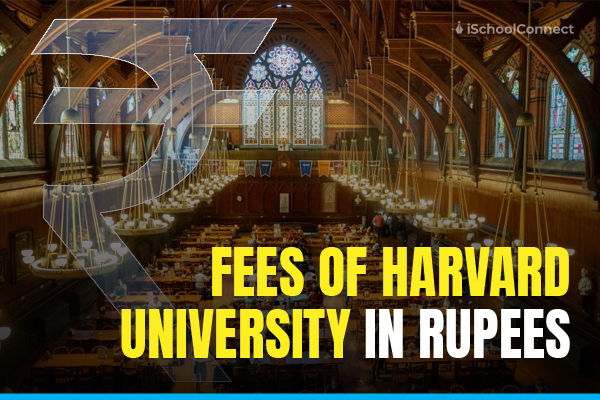Table of Contents
Public vs private universities – Major differences
For international students searching for the best study abroad locations, choosing between public and private universities in the US is an important decision. To begin with, public universities are typically bigger and more affordable, whilst private institutions are frequently smaller and more pricey but could provide more specialised resources and attention. In this blog, we will look at the differences between both private and public universities in the US in order to help international students in making an informed decision about where to pursue their higher education in the United States
What are public universities?
Public universities, also referred to as state universities, receive funding from the state government through public means. This type of financing helps to improve the infrastructure and education opportunities for these universities and their students.
Some top public universities
- University of California, Los Angeles (UCLA)
- University of Michigan, Ann Arbor
- University of North Carolina, Chapel Hill
- University of VirginiaUniversity of California, Berkeley
- University of Wisconsin-Madison
- University of Illinois, Urbana-Champaign
- College of William and Mary
- University of Texas, Austin
- Georgia Institute of Technology.
What are private universities?

Private universities are not funded or run by the government. Instead, they rely on funding from students, donations from benefactors, and private sources. These institutions are among the most prominent in the world.
Some top private universities
- Harvard University
- Stanford University
- Princeton University
- Massachusetts Institute of Technology (MIT)
- California Institute of Technology (Caltech)
- Yale University
- Duke University
- Columbia University
- Johns Hopkins University
- Northwestern University.
Now lets see some major differences between public and private universities on various parameters.
Funding
| Public Universities | Private Universities |
| They are funded by the government, typically at the state level. | Private universities, on the other hand, do not receive direct government funding. |
| Public universities receive funding from state budgets, and in some cases, from federal grants and research funding. As a result, they often offer lower tuition fees for in-state residents. | They rely on other sources of income, such as tuition fees, private donations, endowments, and research grants. |
Governance
| Public Universities | Private Universities |
| Public universities are overseen and managed by state governments or state university systems. | Private universities operate independently and are governed by their own board of trustees or regents. |
| They are subject to state regulations and governance structures. | They have more autonomy in decision-making and are not subject to state-level regulations. |
Size and enrollment
| Public Universities | Private Universities |
| Public universities are generally larger in terms of student enrollment. | Private universities are typically smaller in size compared to public universities. |
| They often have a more diverse student population due to their larger size and more affordable tuition for in-state residents. | They may have a more selective admissions process and may attract students from various states and countries. |
Tuition and financial aid
| Public Universities | Private Universities |
| Public universities often offer lower tuition fees for in-state residents. Out-of-state students usually pay higher tuition rates | Private universities tend to have higher tuition fees than public universities, but they may also offer more financial aid opportunities. |
| Public institutions may have more limited financial aid resources compared to some private universities | Many private institutions have substantial endowments that can be used to provide scholarships and grants to students. |
Academic programs and research
| Public Universities | Private Universities |
| Public universities often have a broader range of academic programs, particularly in areas of significant state or regional importance. | Private institutions may offer more specialized and niche academic programs. |
| They may have strong research programs, especially in fields related to the state’s economic and social needs. | They are also known for their research initiatives, often in collaboration with private corporations and industries. |
Culture and campus life
| Public Universities | Private Universities |
| Public universities usually have a more diverse campusculture due to their larger student populations and broader geographic draw. | Private universities often have a close-knit and tightcampus community. |
| They may offer a wide range of extracurricular activities and student organizations. | They may offer a unique and distinct campus culture with a focus on specific traditions and values |
Alumni network
| Public Universities | Private Universities |
| Public universities often have large and diverse alumni networks due to their larger student populations. | Private universities typically have smaller alumni networks compared to public universities due to their smaller student populations. |
| Alumni networks at public universities may extend across the state and region, offering a broad range of connections. | However, private university alumni networks can be highly engaged and tightly knit, leading to strong connections among graduates. |
| Public university alumni can benefit from a wide range of alumni resources and mentoring opportunities, helping them build valuable connections in various industries | Alumni from prestigious private universities may enjoy a strong alumni network that reaches influential leaders and professionals in various fields. |
Read more: How Does AI Solve Pain Points of the Traditional Enrollment Process?
Key takeaways
- Public universities can be more affordable for in-state students, while private universities may offer more financial aid opportunities to make education accessible.
- Public universities tend to have larger and more diverse student populations, while private universities may offer a close-knit and tight campus community.
- Public universities offer a wide range of academic programs, while private universities may have specialized programs in specific fields.
- Both public and private universities may have strong research programs, but public universities may emphasize state-related research.
Did you find this blog helpful and informative? If so, we have more content related to everything you need to know about studying abroad. , click here to explore more.
Liked this blog? Read next: Sports management in the UK | Eligibility, top universities, admissions, and more
FAQs
Q1. Can international students attend public universities in the US?
Ans. Yes, international students can attend both public and private universities in the US. However, international students may face higher tuition fees at public universities as they are typically considered out-of-state students.
Q2. Do public universities offer scholarships to out-of-state students?
Ans: Some public universities may offer merit-based scholarships to outstanding out-of-state students to attract a diverse and talented student body.
Q3. Do private universities have smaller class sizes than public universities?
Ans: Private universities may have smaller class sizes due to their smaller student populations, potentially leading to more personalized interactions with professors.






